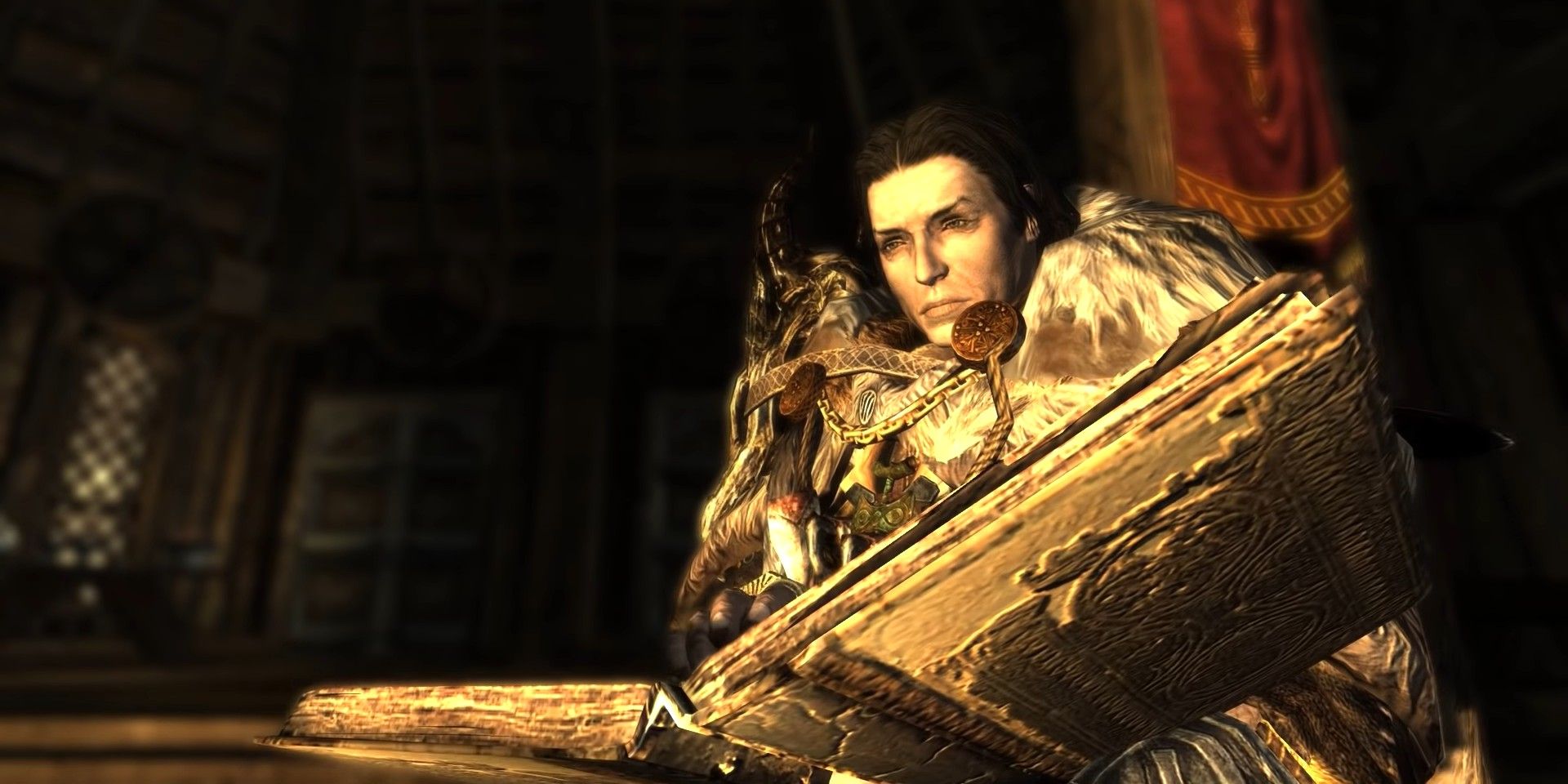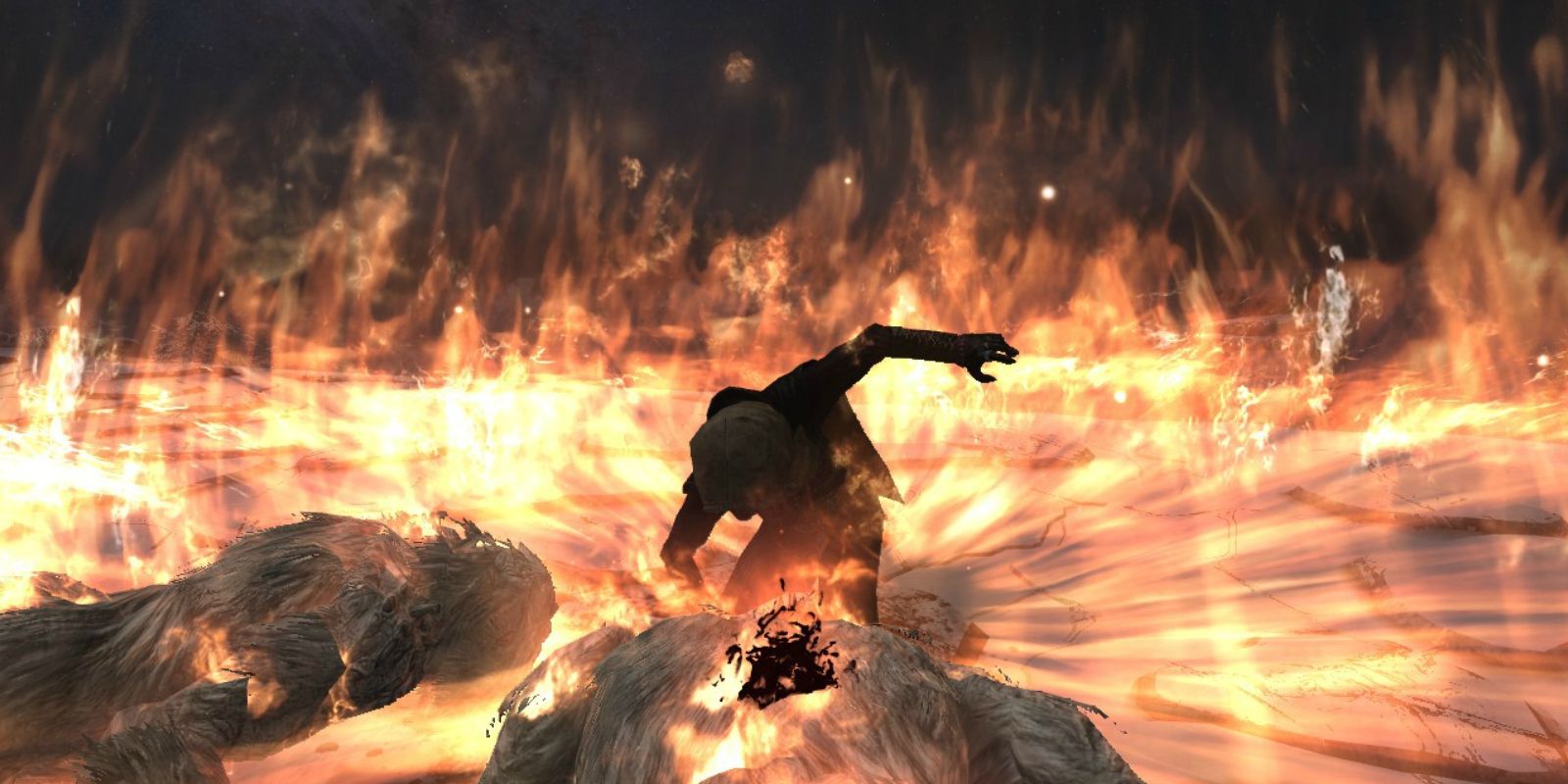Bethesda's RPG series is renowned in part for the complex and detailed lore it has established, and while the franchise's world borrows elements from several cultural mythologies, The Elder Scrolls V: Skyrim's story draws some inspiration from modern religions as well. The Elder Scrolls' timeline is divided into distinct time periods called "eras" used to contextualize the world's extensive history. After the fourth installment, Oblivion, finally ends the long-running Third Era, Skyrim ushers in the Fourth Era of Elder Scrolls history. However, the series' lore teases another upcoming time period that may be the most momentous yet, called "kalpa."
Variations of Bethesda's long-running Easter egg kalpa are found in multiple Elder Scrolls games, primarily Skyrim and The Elder Scrolls Online. The term describes the period of time during which the world is destroyed and created anew, resetting the cyclic timeline and ushering in a new Dawn Era, the first epoch of Elder Scrolls history. The cause and nature of the apocalypse are unclear, with the series' many cultures presenting vastly different theories. However, the term "kalpa" actually originates from Hindu and Buddhist cosmology, which has numerous ties to the concept used in Elder Scrolls and clearly influenced the surrounding lore.
Within Hindu and Buddhist doctrine, kalpa is used to describe the long period of time between the birth and rebirth of the world and/or universe, and the similarities may provide information missing from Elder Scrolls lore books. The word itself is Sanskrit and can be more literally translated as "eon," often contextually related to the "lifetime of the universe." However, this concept has different meanings for the two faiths. Hinduism posits that a kalpa lasts 4.32 billion years, after which the world is destroyed by fire and recreated many years later. The material plane is subjected to this cycle of rebirth thousands of times until the god Brahma, which could be described as the god of creation, dies, so the world can no longer be recreated.
Religions Could Explain The Elder Scrolls' Apocalypse
The Hindu term is heavily connected to the concept seen in The Elder Scrolls, with both cycles likely initiated by deities. In both iterations, intelligent life inevitably develops and defines the historical period, but the best Elder Scrolls lore that appears on the topic uses the term in reference to the end times rather than the entire lifespan of the world. While Hinduism sees countless worlds rebuilt by countless versions of Brahma exist simultaneously, cultures in Elder Scrolls seem unsure of the scale of their apocalypse in relation to the rest of the universe.
In Buddhist doctrine, the term has a vaguer definition, and even the most specific explanation claims that a kalpa could encapsulate four possible lengths of time. Regardless of the multiple definitions, it is agreed upon that countless kalpas have already occurred, and each one is ended by the destruction of most of the universe by fire. The Buddhist concept may be more akin to that seen in The Elder Scrolls, as both are mysterious and uncertain by nature, with the only known aspect being the nature of the event itself. The kalpa might be an anti-human apocalypse in Elder Scrolls 6 or some other unrelated incident pertaining to the series' dense lore. However, considering The Elder Scrolls' kalpa is clearly linked to the two real-world religions, they might shed some light on the coming apocalypse, which could bring a fiery end to the world left by The Elder Scrolls V: Skyrim.


